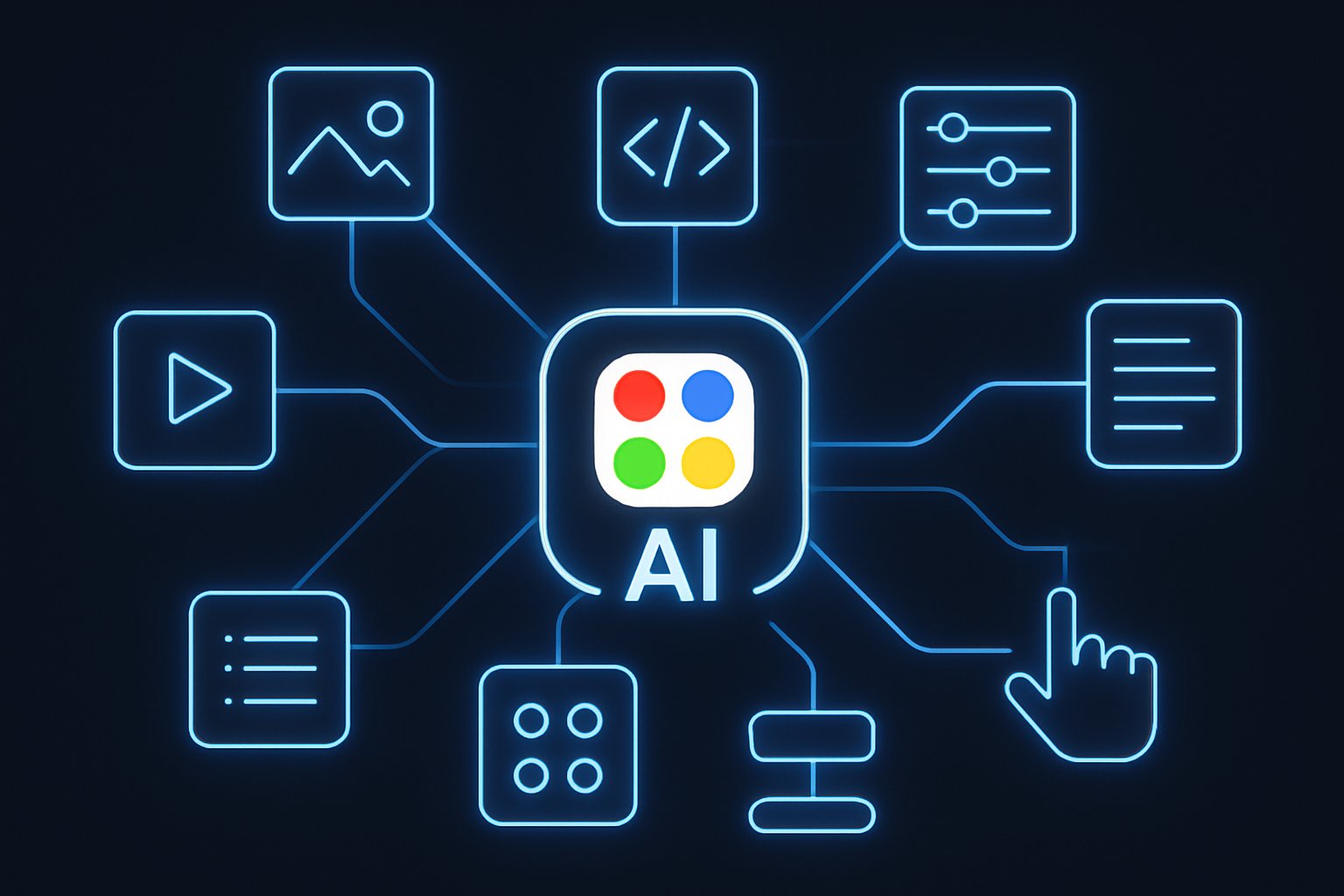
AI CERTS
19 hours ago
Google Opal: Future of No-Code AI Development
Meanwhile, experts highlight best practices that mitigate emerging risks. Read on to understand opportunities, challenges, and next steps for harnessing this novel capability.
Opal Concept In Depth
Opal lives within the Google Labs Opal experiment and follows a simple pattern. Users describe an app, the system generates a node graph, and Google hosts the finished AI mini-apps. Furthermore, each node represents prompt chaining, transforms, or model calls, giving builders transparent control. In contrast, legacy low-code tools often hide model orchestration behind opaque wizards. This transparency aligns with the ethos of democratized AI.

Opal also embraces RAG workflow automation, allowing flows to retrieve external knowledge before generating responses. Consequently, users can stitch research, summarization, and structured outputs into one shareable link. Such capability differentiates Opal from Canva or Figma, which focus mainly on design assets. Nevertheless, Opal still targets prototypes, not full production services.
These mechanics reveal why Opal feels intuitive for newcomers. However, features matter only when they solve real problems, which the next section explores.
Key Feature Set Highlights
Google upgraded Opal twice since launch, refining speed and visibility. Moreover, October updates introduced parallel execution and a visual debugger. Subsequently, November expansion improved latency and unlocked global sign-ups.
Workflow Creation Process Flow
Builders start by typing an idea. Opal returns a draft workflow containing input, generation, and output nodes. Additionally, conversational edits let users refine prompts without touching code. This process exemplifies no-code AI development simplicity.
Debugging And Speed Gains
The built-in debugger exposes intermediate tokens and model outputs. Consequently, non-engineers can trace errors quickly. Google claims generation time dropped from five seconds to near real-time for simple AI mini-apps. These enhancements strengthen Opal’s appeal for live demos and hackathons.
Key capabilities now include:
- Drag-and-drop node editing for instant workflow tweaks.
- Parallel execution enabling RAG workflow automation with reduced latency.
- One-click publishing that produces Google-hosted links for AI mini-apps.
- Sheets and Drive integrations that feed structured data into models.
- Role-based sharing using Google accounts for basic access control.
Together, these capabilities accelerate idea validation for diverse teams. Therefore, understanding market forces clarifies why Google invests heavily here.
Evolving Market Context Drivers
Analysts predict low-code revenues could reach $44.5 billion by 2026, according to Gartner. Furthermore, Forrester projects adoption could approach $50 billion by 2028 in an AI-fuelled scenario. Such forecasts underscore massive demand for no-code AI development. Google Labs Opal positions the company against Microsoft Power Apps, Canva, and Figma.
Additionally, citizen developers want AI mini-apps that automate repetitive tasks. Consequently, democratized AI becomes a strategic differentiator for cloud platforms. Meanwhile, RAG workflow automation unlocks deeper knowledge retrieval, which drives sophisticated use cases. Startups leverage democratized AI to close skill gaps and outpace larger incumbents. These trends validate Google’s global rollout timeline.
Market momentum signals sustained investment across competitors. Nevertheless, risk management remains critical, as the following section explains.
Security And Governance Concerns
Security leaders warn that citizen tools can create shadow AI risks. In contrast, traditional development pipelines include auditing and centralized control. Google’s CISO office argues blocking Opal outright will not work. Therefore, organizations must implement monitoring, policy, and data loss prevention controls.
Independent analysts highlight vulnerabilities like data leakage and compliance violations. Moreover, the inability to export code increases vendor lock-in and complicates remediation. RAG workflow automation adds new attack surfaces if retrieval endpoints expose sensitive information. Consequently, governance frameworks should classify data and restrict external calls where necessary.
Professionals can boost expertise via the AI for Everyone™ certification. Moreover, structured learning helps teams design secure no-code AI development workflows.
Robust governance mitigates most operational risks. Next, we examine enterprise adoption trajectories.
Enterprise Adoption Outlook Trends
Early reviews praise speed yet criticize missing enterprise controls. Megan Li from Google notes unexpected sophistication in user projects. Consequently, Google Labs Opal community requests admin APIs, audit logs, and custom domains. Google has not announced pricing, SLAs, or export features. Many executives now frame Opal as an entry point to sustainable no-code AI development across business units.
Nevertheless, many enterprises pilot Opal in low-risk sandboxes. Teams use AI mini-apps for marketing content pipelines and internal research dashboards. Additionally, democratized AI initiatives align with talent shortages, giving business units tangible wins. The continued beta phase offers a low barrier proof-of-concept path.
Adoption will hinge on governance and integration roadmaps. The concluding section outlines practical actions for decision makers.
Practical Next Steps Forward
Stakeholders should begin with a structured pilot. Define a narrow use case that avoids regulated data and mission-critical workflows. Furthermore, involve security teams early to review RAG workflow automation endpoints. Capture metrics such as build time, output accuracy, and user satisfaction.
Subsequently, evaluate whether no-code AI development improves speed or simply shifts technical debt downstream. If benefits outweigh risks, request Google’s roadmap for enterprise controls, including export options.
Recommended pilot checklist:
- Identify stakeholder champion and security liaison.
- Limit access to Google accounts within test group.
- Document model prompts and data sources for audit.
Long-term success demands a center of excellence around no-code AI development across disciplines. Training programs should reinforce ethical guidelines, governance, and scalable patterns for no-code AI development. These steps keep experimentation controlled while capturing measurable value. Consequently, teams build evidence for scaling decisions.
Structured pilots create informed roadmaps and realistic expectations. Therefore, organizations position themselves to leverage future Google Labs Opal enhancements.
Google Labs Opal demonstrates how intent-driven workflows can leave PowerPoint and become living AI mini-apps overnight. Market forecasts, security debates, and early enterprise pilots all point to inevitable maturation of no-code AI development. Consequently, professionals who skill up now will shape future governance standards. Moreover, structured pilots guided by the checklist above offer immediate, low-risk insight. Act now by earning the AI for Everyone™ certification and launching an Opal pilot. Your organization will thank you for accelerated innovation delivered safely.



